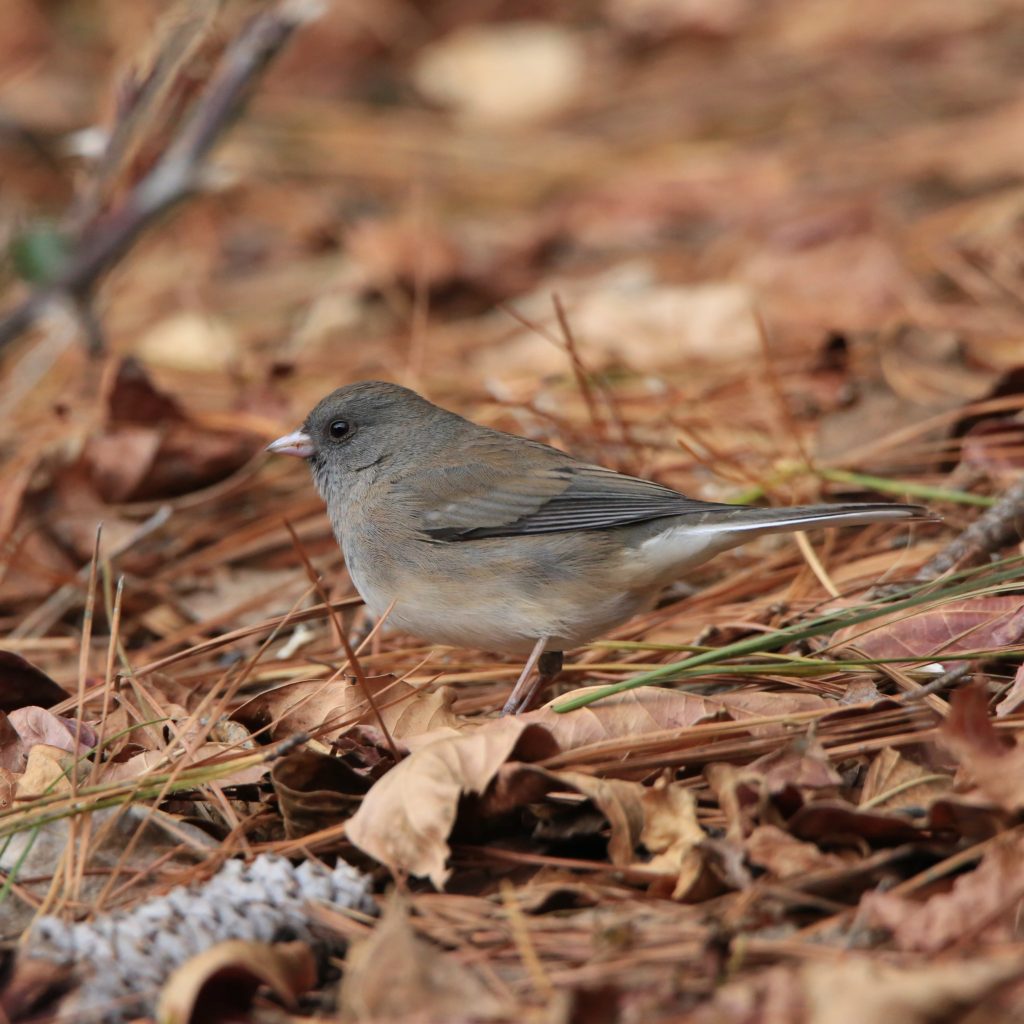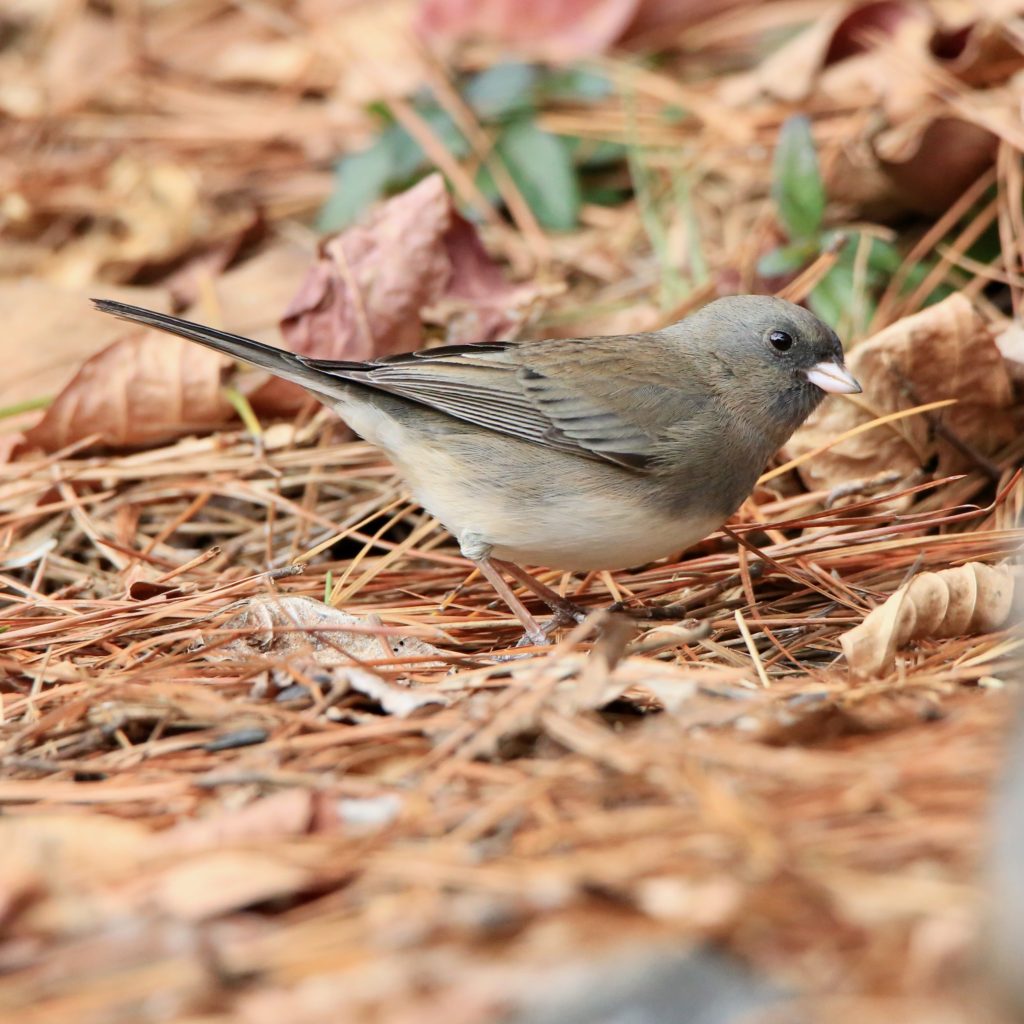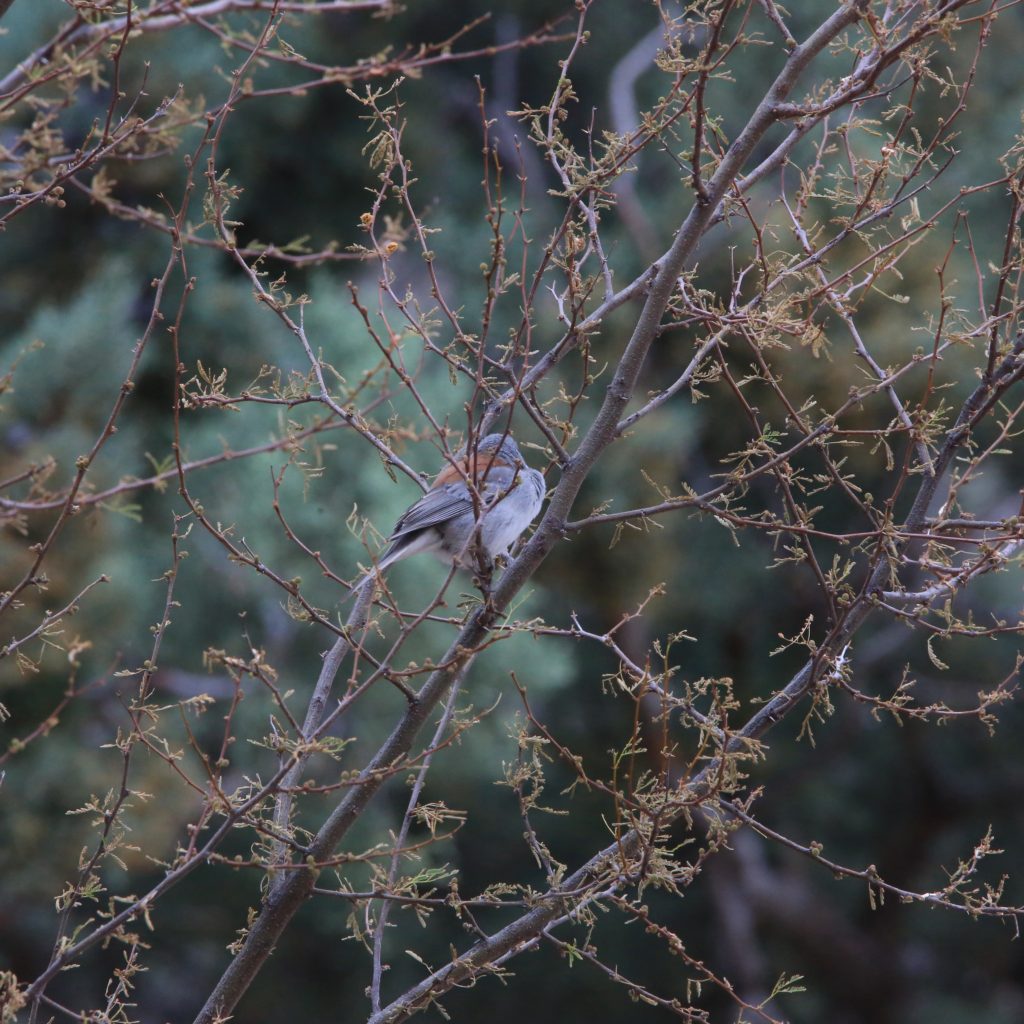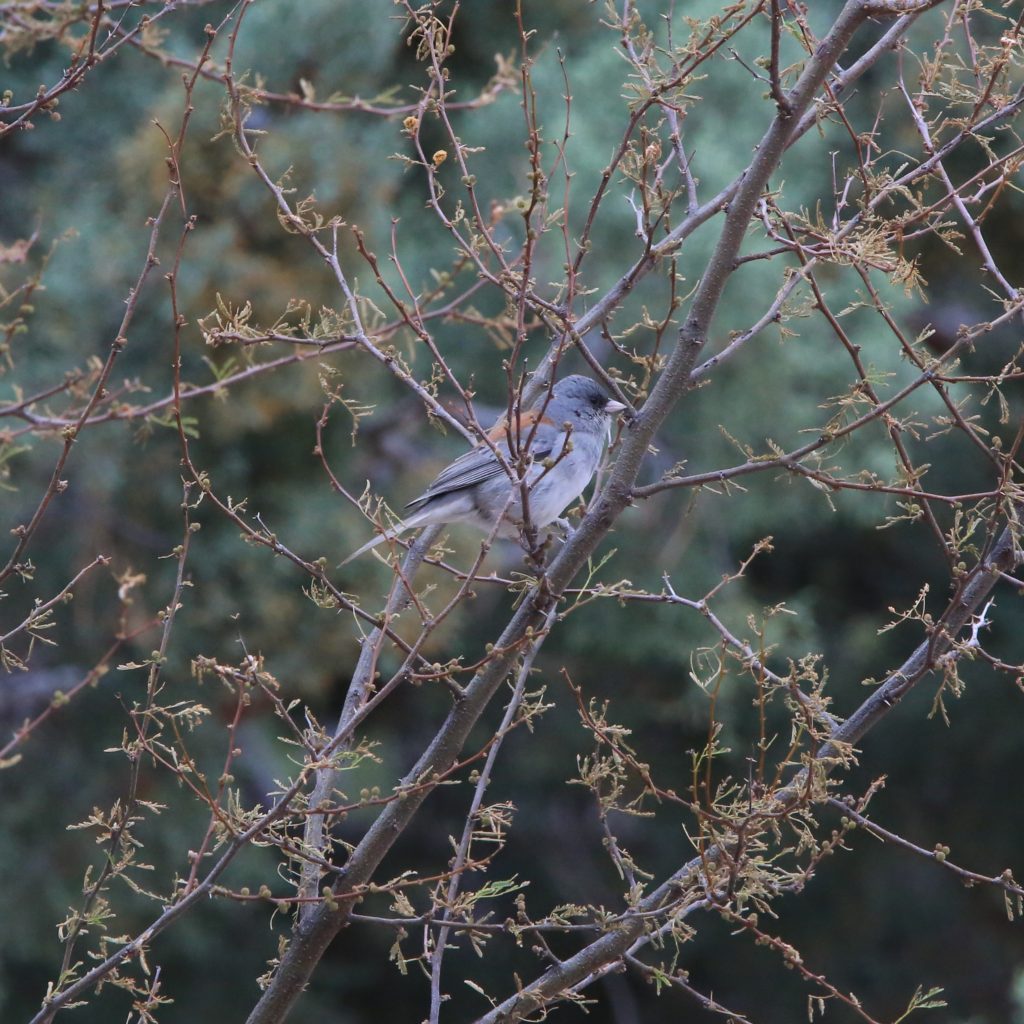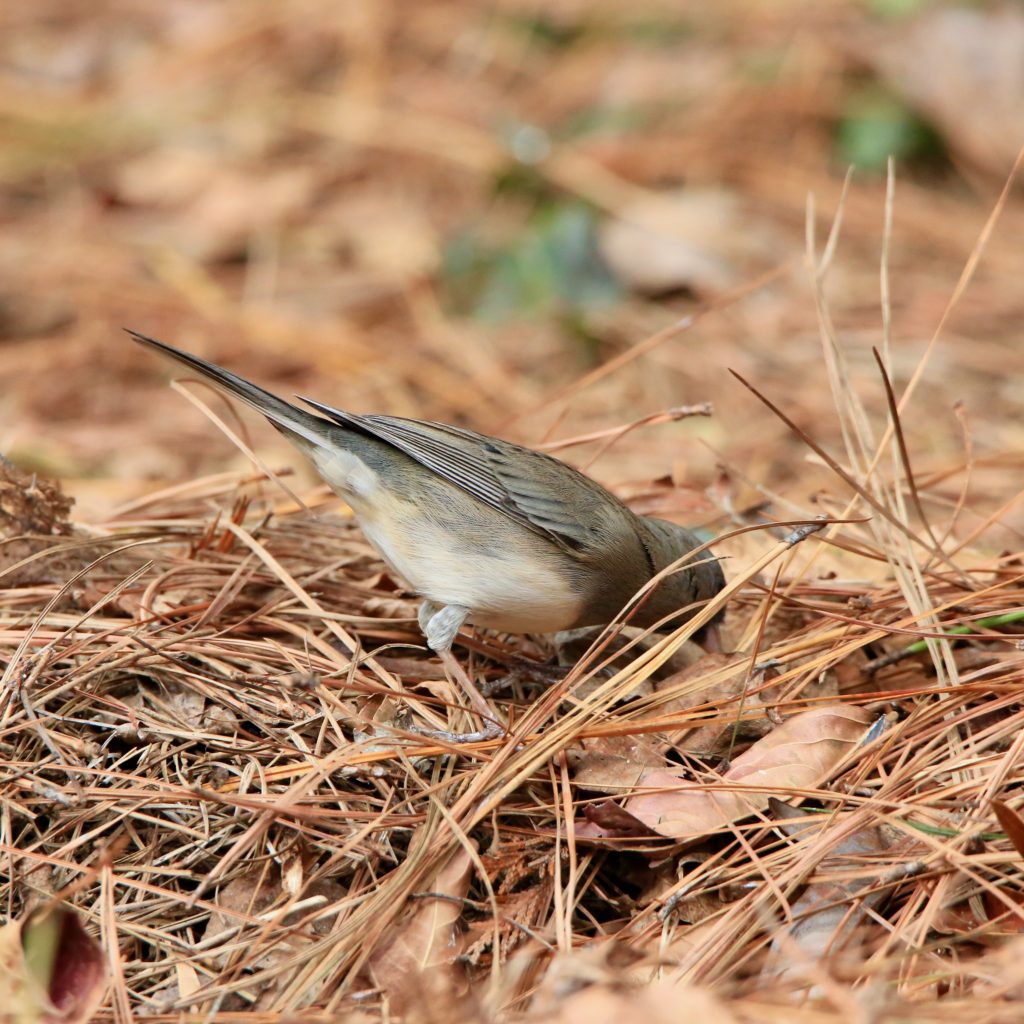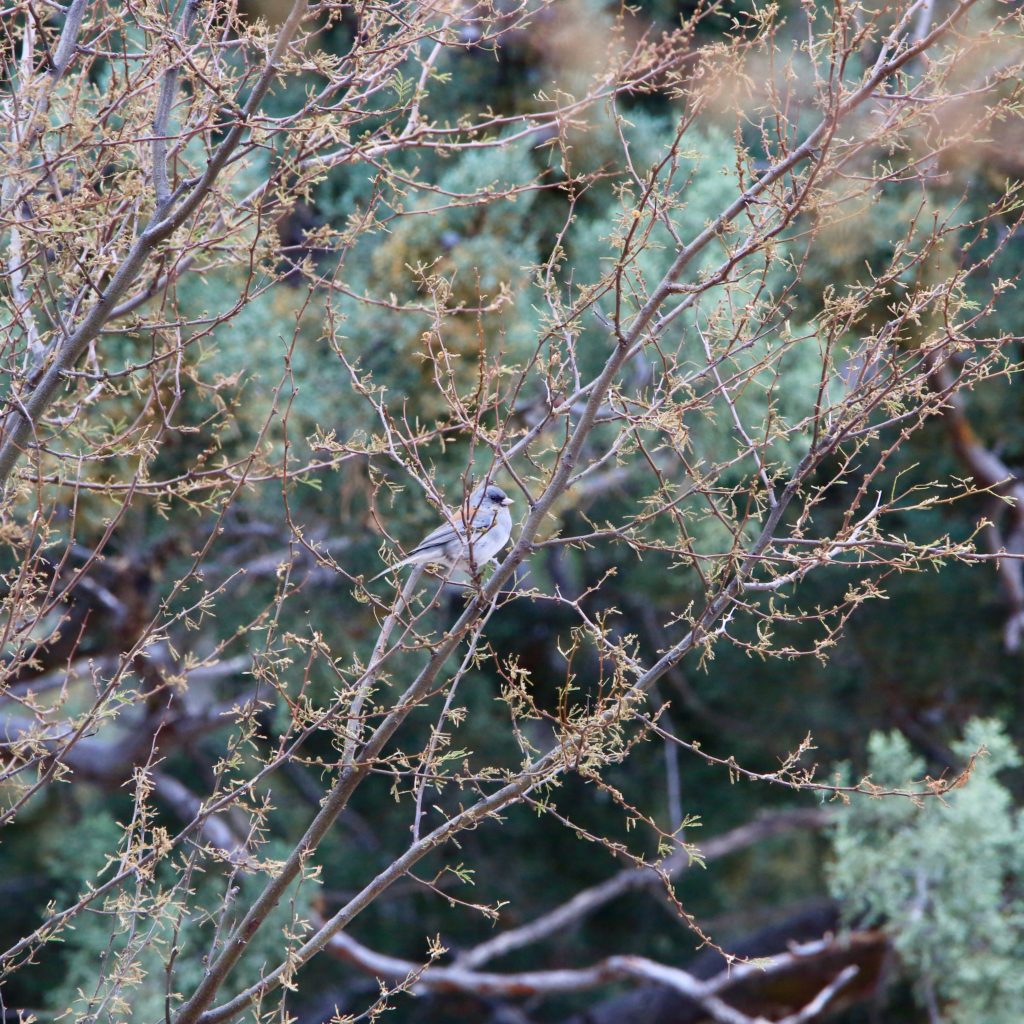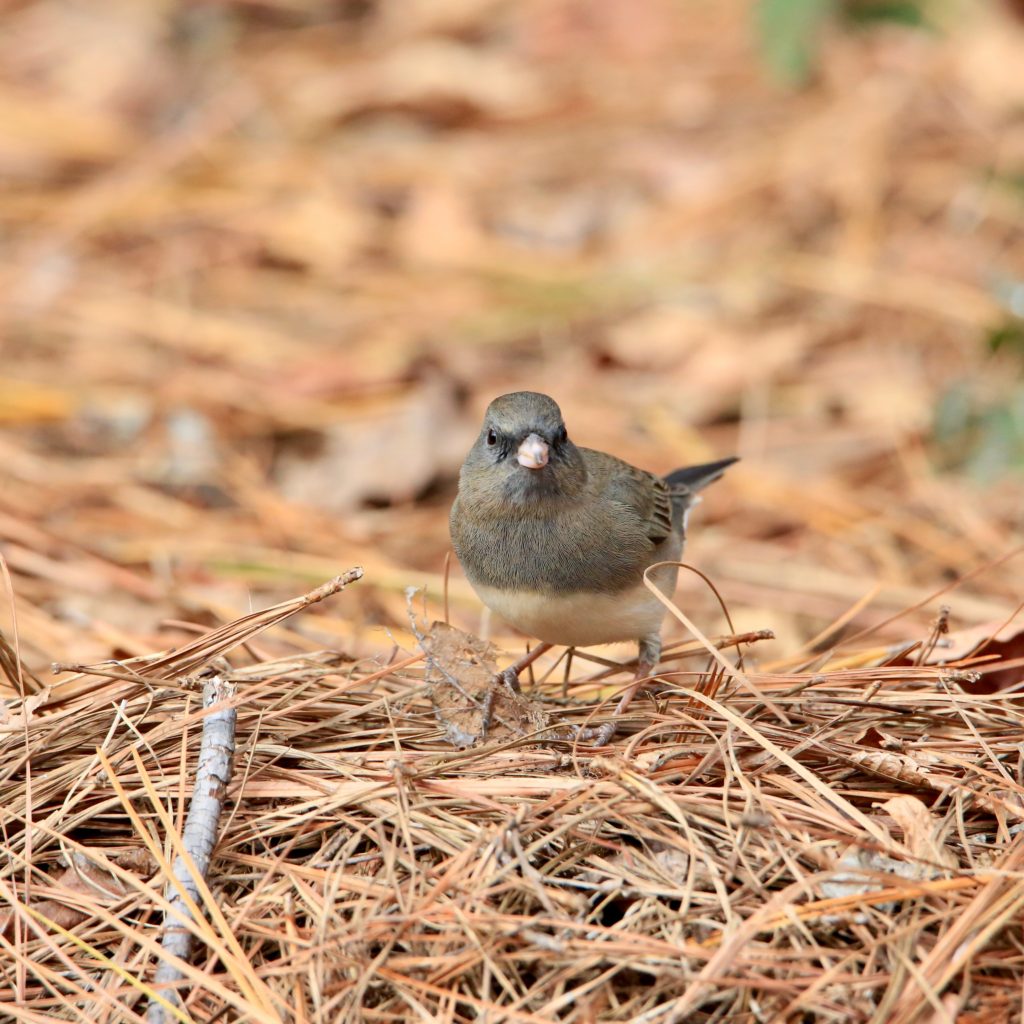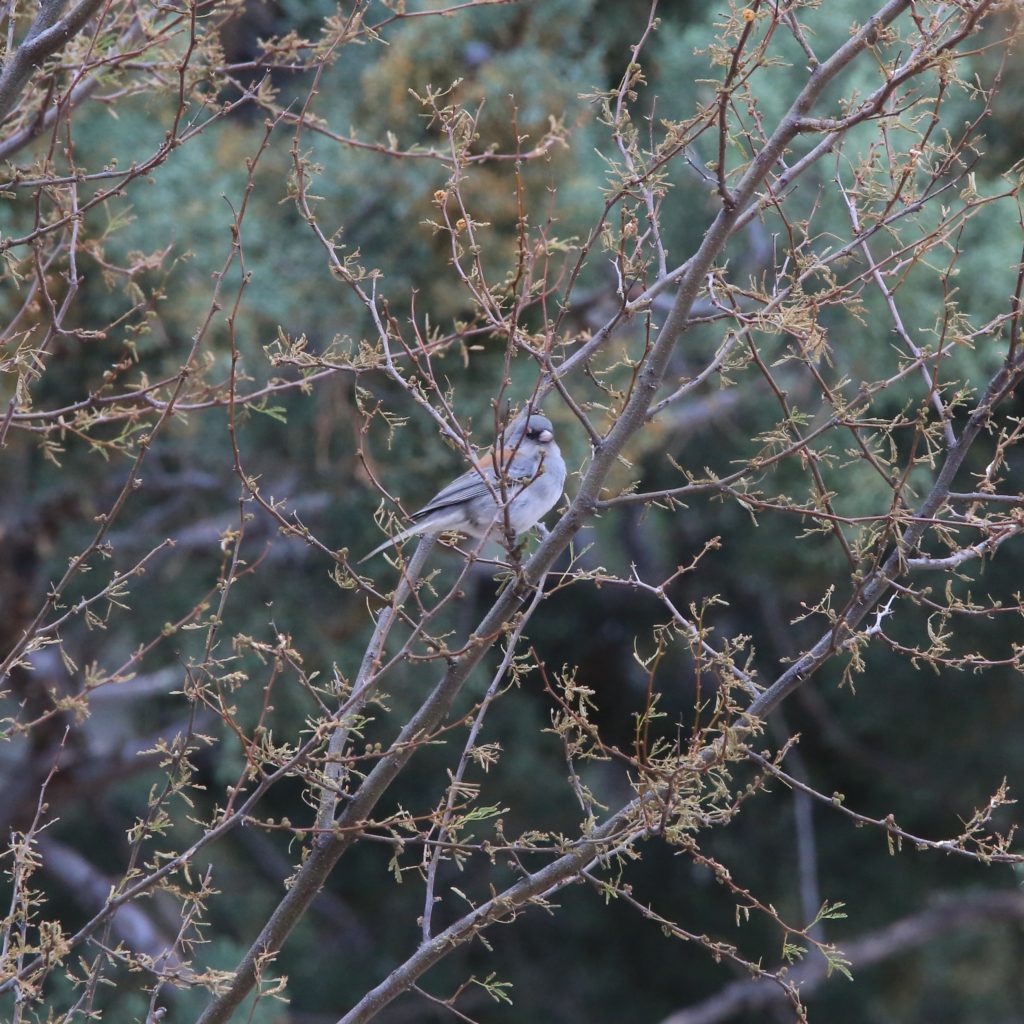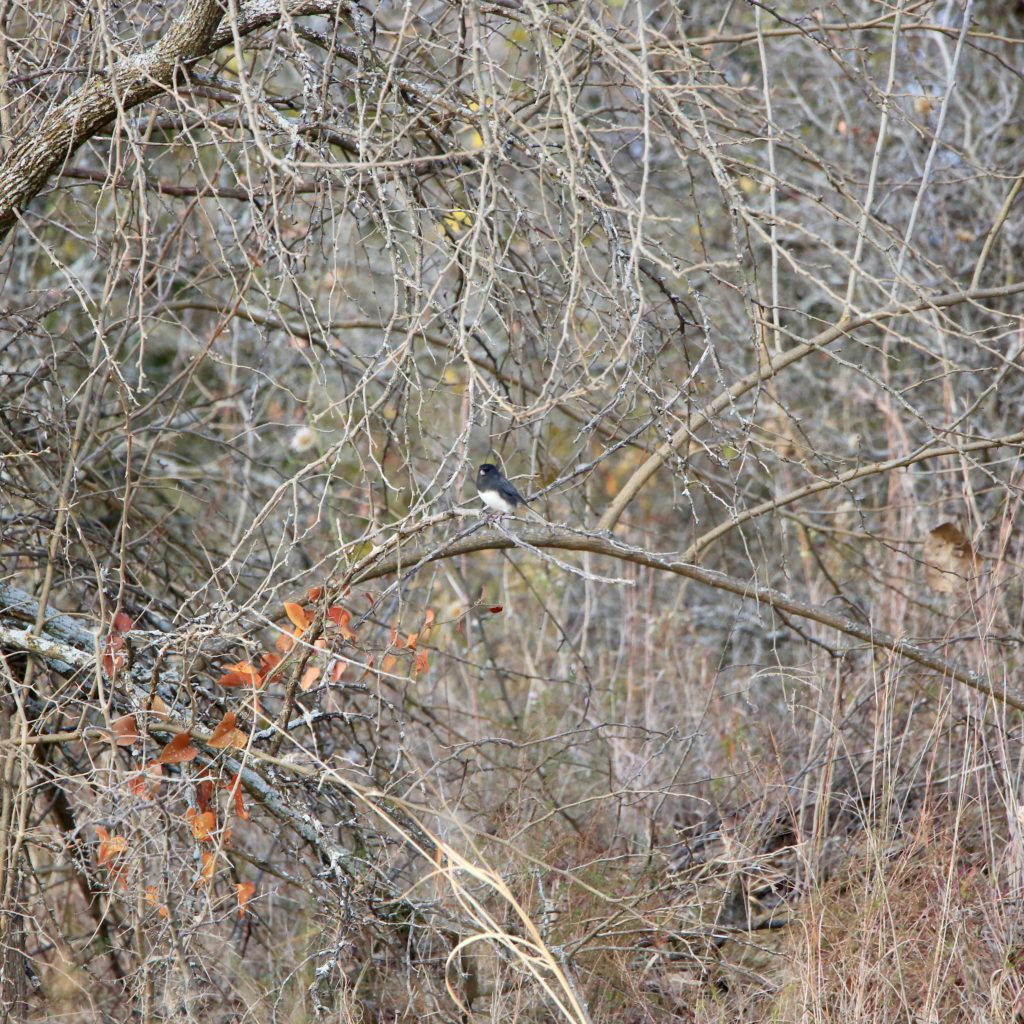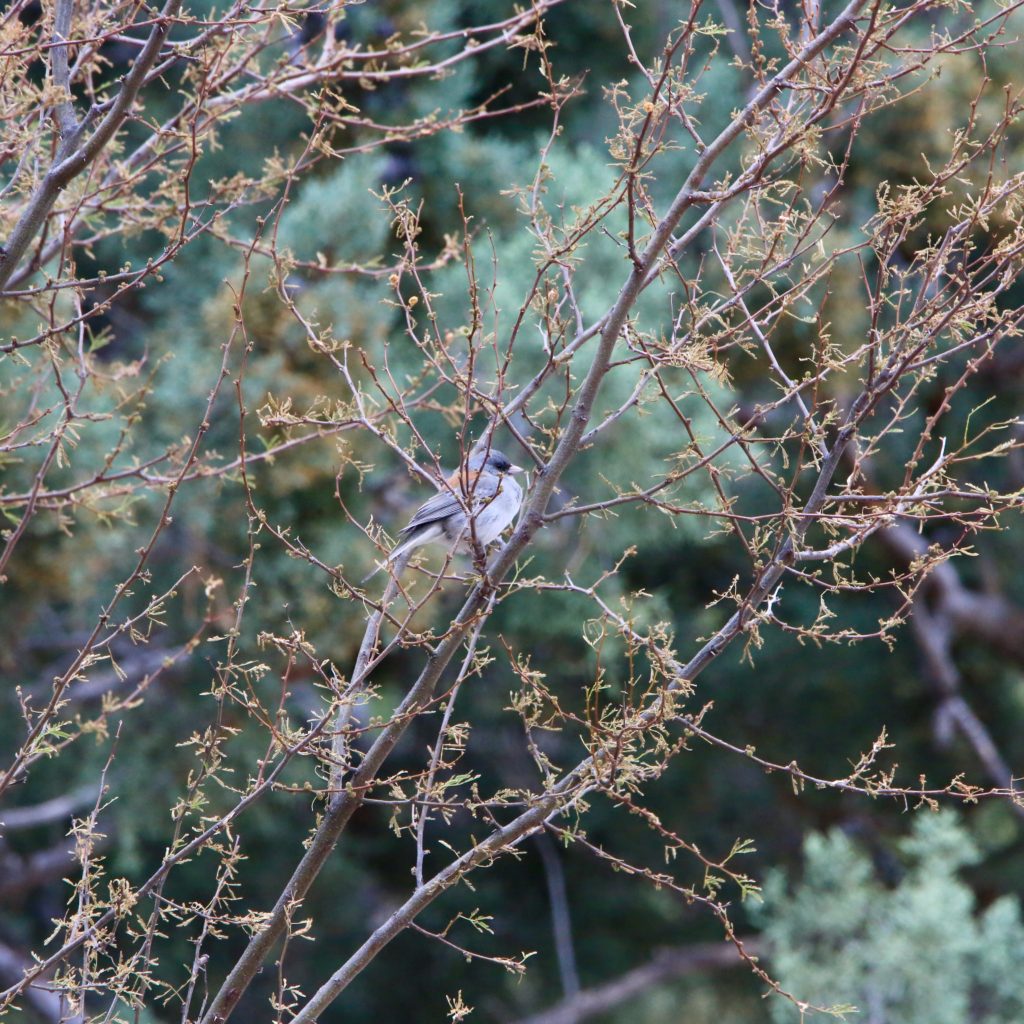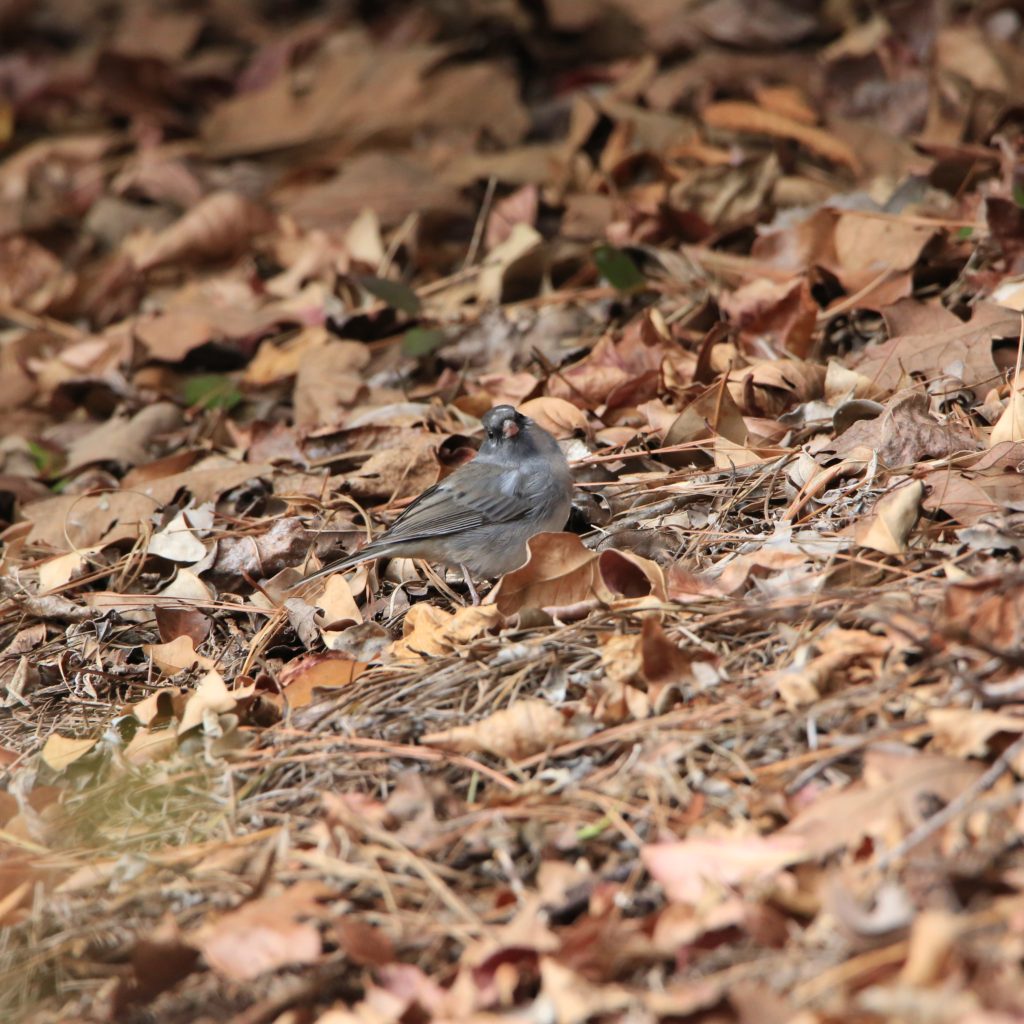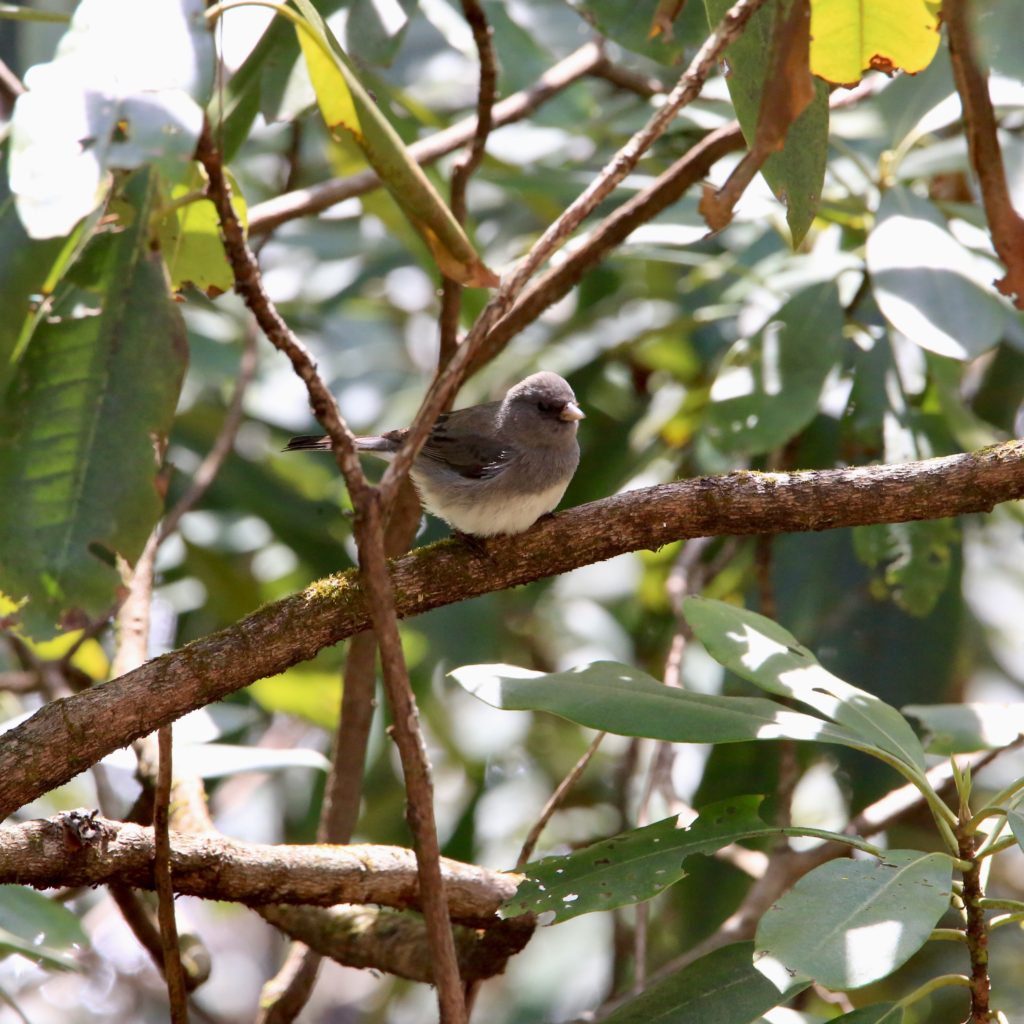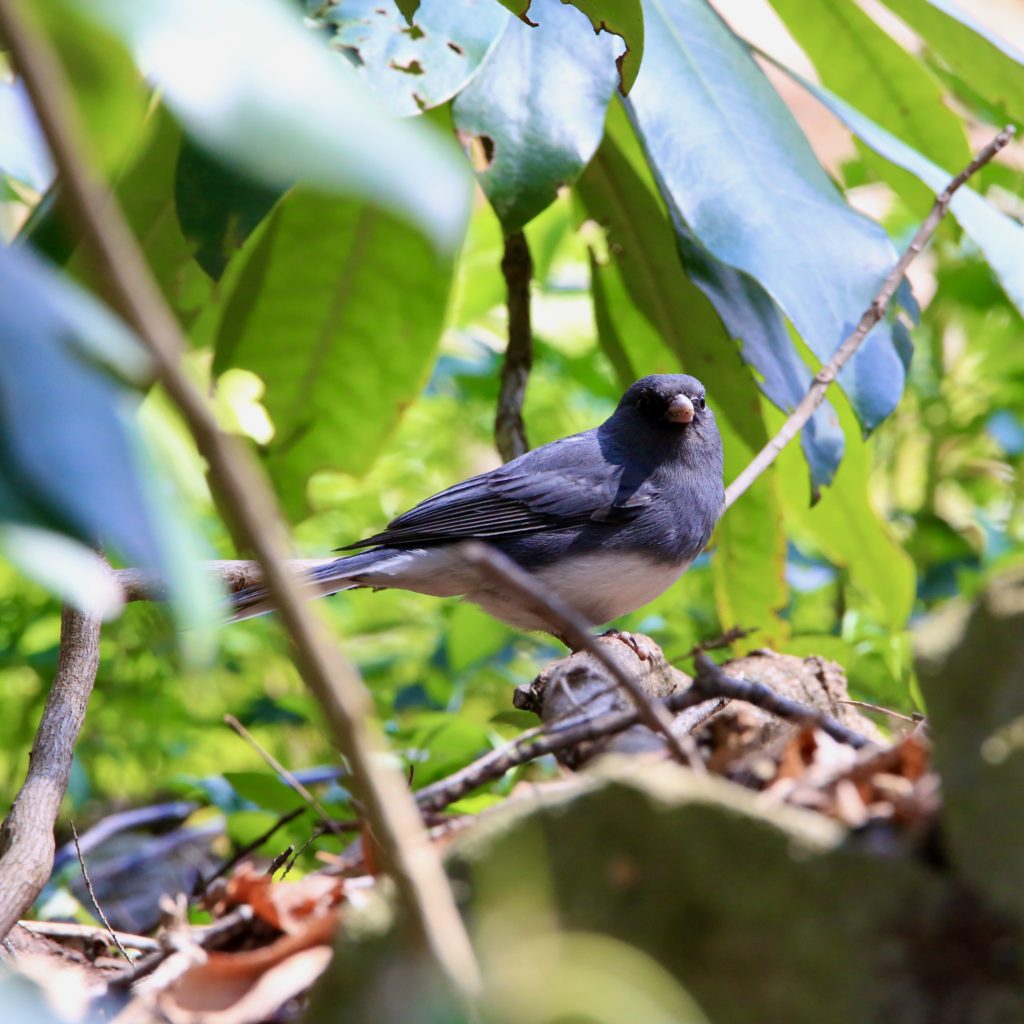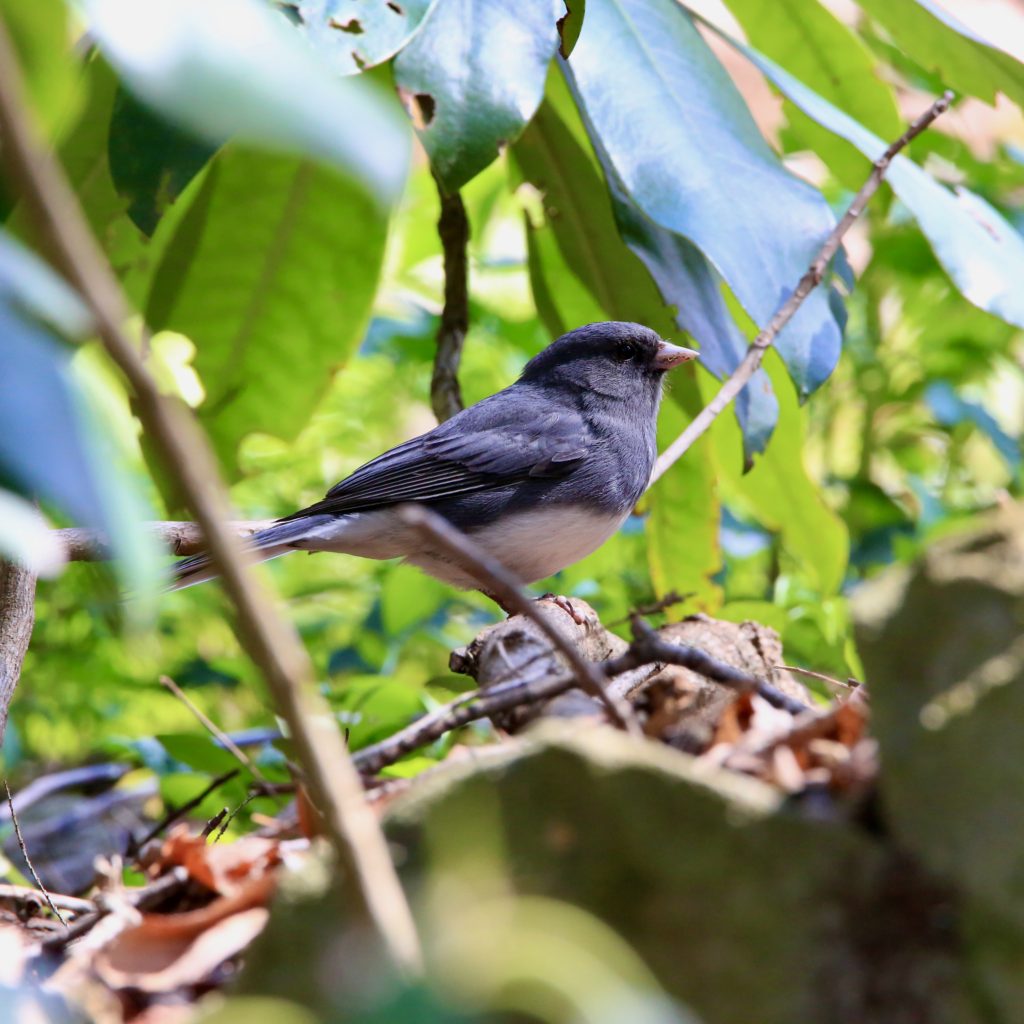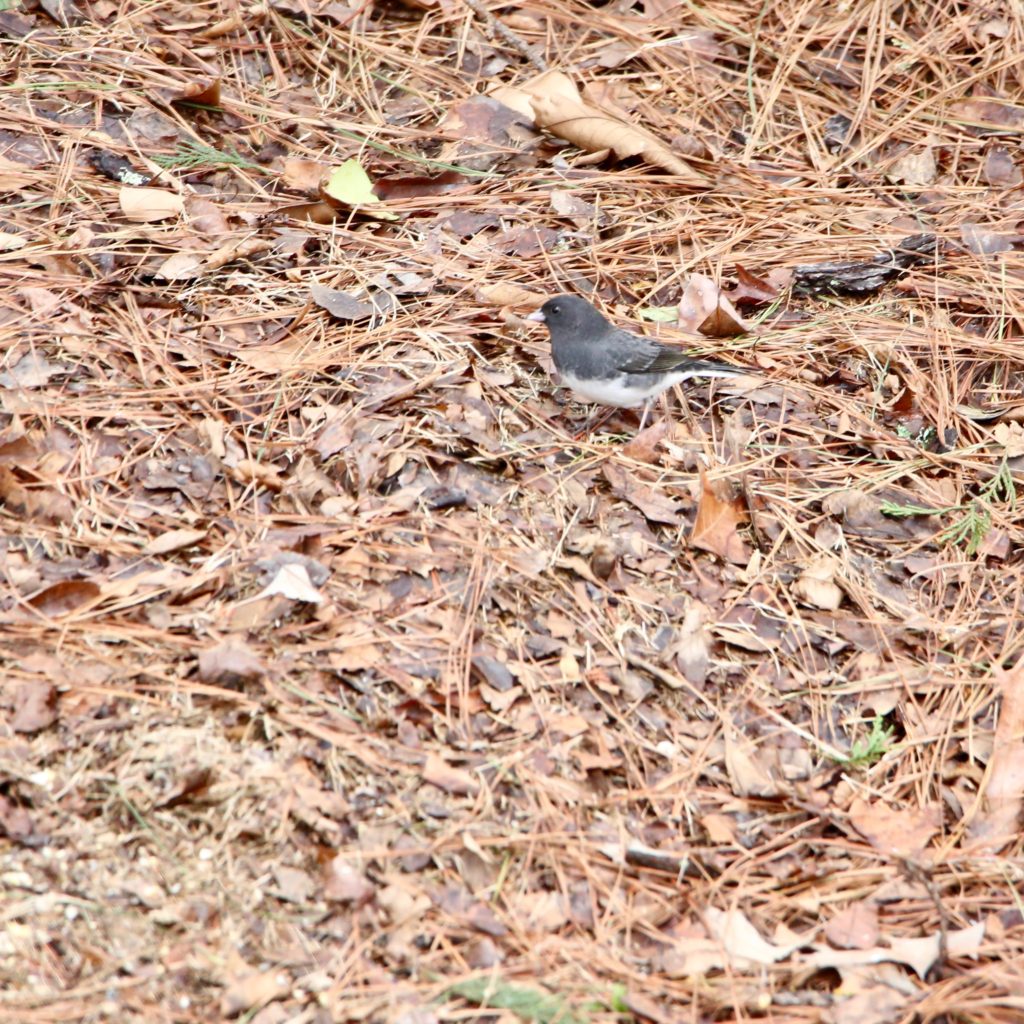
Dark-Eyed Junco
A Dark-eyed Junco is a fun bird to see while bird watching. Below are some tips to help you identify Dark-eyed Juncos. We have also put together a list of fun Dark-eyed Junco t-shirts, Dark-eyed Junco bird patches, bird houses, bird feeders, binoculars, stickers and other fun bird watching items.
About Dark-eyed Juncos
Dark-eyed Juncos are small sparrows that grace the western mountain forest floors in Canada, populating other parts of North America during the cold season. Dark-eyed Juncos tends to flash their bright tail feathers during flight.
Description and Identification
They have several subspecies but the majority of these birds are medium-sized sparrows with round heads, long tails and a fairly small pinkish pale bill. They’re easy to recognize by their crisp markings and the bright white tail feathers. The slate the colored form is mostly grey with a white belly, the Oregon form has a dark hood, light brown back, buffy sides and a white belly, the ones near the rocky mountain have a slate-grey head, brown back and pinkish-brown sides, the birds in the southwestern U.S have a grey head, dark face and reddish-brown back. The white-winged form is slightly paler grey with faint white wing bars and dark face.
Dark-eyed Junco Color Pattern
In terms of color, juncos vary across different regions but they generally have grey heads, breasts and brown wings. They also grace the sky with flashy white outer tail feathers. Their dull color is complemented by a short pink bill. Males have easier markings to spot than females.
Dark-eyed Junco Size
Their body size compared to other sparrows is medium with a round head accompanied by a short bill and long tail. Juncos have a relative size of:
- Length 13 – 17 cm
- Weight 18 – 30 g
- Wingspan 18 – 25 cm
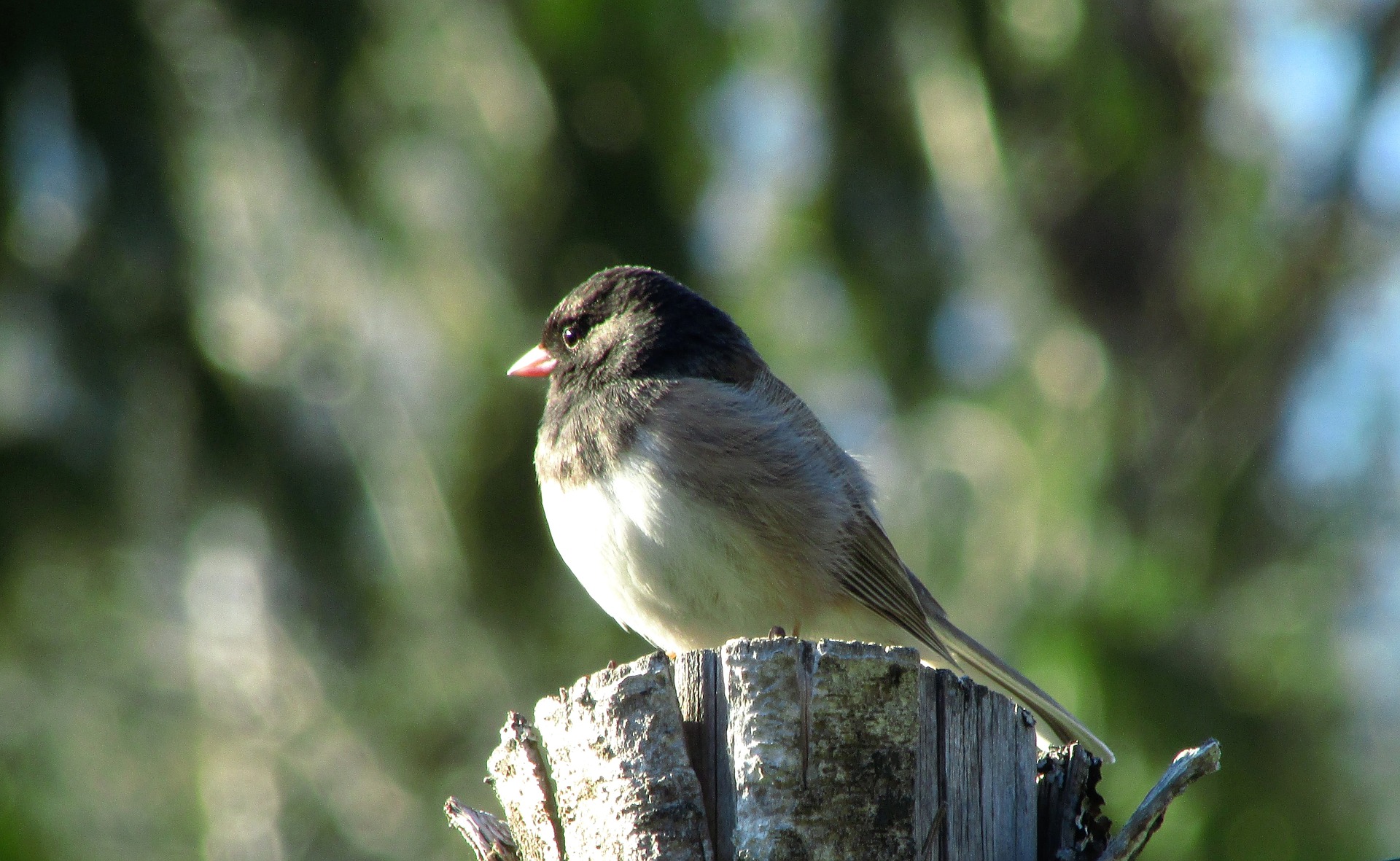
Dark-eyed Junco Behavior
Juncos are typical forages where they scratch and peck at leaf litter and move around by hopping rather than walk. They may fly up tree trunks flashing their tails as they catch insects. Male Juncos are territorial over the summer period where they make excited calls accompanied by rapid flights. During winter several subspecies flock together foraging with other birds such as sparrows and bluebirds. Later arrivals to the flock have a lower rank than those who have been with the flock longer.
What Dark-eyed Junco Eat and Their Food
Juncos are primarily seed-eaters, with seeds of chickweed, buckwheat, lamb’s quarters, sorrel and sunflower. During summer the diet includes beetles, moths, butterflies, caterpillars, ants, wasps, flies and other insects. Sometimes they also feed on berries.
Juncos primary source of nourishment are seeds like chickweed, buckwheat, and sorrel while at feeders they have a taste for millet over the common sunflower seeds. While breeding they change their diet to insects such as beetles, moths, and butterflies.
Where Dark-eyed Juncos Live and Their Habitat
Dark-eyed Juncos breed in coniferous or mixed-coniferous forests across Canada, the western U.S., and in the Appalachians. During winter they fly to open woodlands and fields, moving to higher elevations to more than 11,000 feet during the warmer months. The slate-colored is the most widespread and the only form found regularly in the East. It breeds throughout the species’ range east of the Rockies and in the northern region. The white-winged junco is the most local, breeding exclusively in the Black Hills region and wintering along the eastern edge of the Rockies. The Oregon junco breeds in the West Coast states north to southern Alaska and east to central Nevada and western Montana; it winters throughout the West and Great Plains. The pink-sided breeds in the northern Rockies, centered on Yellowstone and ranging from northern Utah to southernmost Alberta and Saskatchewan; it winters in the southern Rockies, Southwest, and western Great Plains.
They are commonly found in deciduous forests such as oak and also in North American elevations of up to 11,000 feet. During winter they migrate to various habitats such as roadsides, parks, and gardens.
Range and Migration

These birds are medium distant migrants. Juncos that breed in Canada and Alaska migrate to the southern United States in winter. The birds that are in the Rocky Mountains are only short-distance migrants, and some individuals in the West and in The Appalachian Mountains of the East don’t migrate at all. They migrate following the food supply south, but many will winter over, given an adequate food supply. In winter males migrate farther north than females. Some birds of the northern part of North America are resident, but most migrate either north-south or up and down in elevation.
Nesting
The male sings from high perch to defend nesting territory and attract a mate. During courtship, both members of a pair hop about on the ground with their wings drooped and their tails spread, showing off their white outer tail feathers. Females build the nests almost always on the ground in a depression, hidden under grass, a log, a rock, or an upturned tree root, using her beak to weave together twigs, leaves and moss, then lined with grasses, ferns, rootlets and use her body to give the nest its shape. The nests usually take 3-7 days to build, and when finished they are 3-5.5 inches across. Pairs typically raise 1 or 2 broods per year. Both parents feed the chicks, which leave the nest at 9 to 11 days.
Dark-eyed Junco Lifecycle
Females choose nesting areas above the ground on horizontal branches. She lays 3-6 eggs and incubates them for 12-13 days and the hatchlings leave the nest 10-13 days later.
Ornithology
Bird Watching Academy & Camp Subscription Boxes
At Bird Watching Academy & Camp we help kids, youth, and adults get excited and involved in bird watching. We have several monthly subscription boxes that you can subscribe to. Our monthly subscription boxes help kids, youth, and adults learn about birds, bird watching, and bird conservation.
Bird Watching Binoculars for Identifying Dark-eyed Juncos
The most common types of bird watching binoculars for viewing Dark-eyed Junco are 8×21 binoculars and 10×42 binoculars. Bird Watching Academy & Camp sells really nice 8×21 binoculars and 10×42 binoculars. You can view and purchase them here.
Dark-eyed Junco T-shirts
If you love the Dark-eyed Junco you should purchase a Bird Watching Academy & Camp T-shirt. To help support bird conservation we donate 10 percent to bird conservation activities.
Dark-eyed Junco Iron On Patches
Kids, Youth, and Adults love to collect our Bird Watching Academy & Camp iron on patches. Our bird watching patches help you keep track of the birds you have seen an identified. You can also display the patches on our Bird Watching Academy & Camp banners.
The Dark-eyed Junco is a great iron on patch to start your collection with. The patches are durable and can be sewn on or ironed on to just about anything.
Dark-eyed Junco Stickers
Stickers are a great way for you to display your love for bird watching and the Dark-eyed Junco. We sell a monthly subscription sticker pack. The sticker packs have 12 bird stickers. These sticker packs will help your kids learn new birds every month.
Bird Feeders For Dark-eyed Juncos
There are many types of bird feeders. Here are our favorite bird feeders for your backyard. We use all of these bird feeders currently. Kids will have a great time watching birds eat at these bird feeders. Using this collection of bird feeders will provide a wide variety and many types of birds.
Best Bird Houses for Dark Eyed Juncos
There are many types of bird houses. Building a bird house is always fun but can be frustrating. These 4 bird houses have become our favorites. Getting a bird house for kids to watch birds grow is always fun. We spent a little extra money on these bird houses but they have been worth the higher price and look great.



